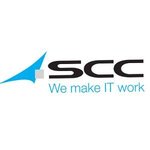Top It Service Management Softwares
IT Service Management software streamlines IT processes, enabling organizations to deliver efficient service delivery and support. It provides a comprehensive framework for managing IT services, ensuring alignment with business goals. This category of software encompasses tools for incident management, problem resolution, change management, and asset tracking. Users benefit from automation, which ... Read More
35 companies found
Product Description
SCC Software is designed to streamline and simplify the way you manage your data, processes, and workflows. Founded with the mission to make complex operations more manageable, SCC Software offers user-friendly tools that cater to the needs of businesses of all sizes. Whether you're a small business looking to grow or a larger organization needing more efficient solutions, SCC Software provides th... Read More
Users
- • No Data
Industries
- • No Data
Market Segment
- • No Data
Product Description
TOPdesk is a software solution designed to help businesses streamline their service management. Whether you're handling IT requests, facilities management, or customer service inquiries, TOPdesk makes things easier. It’s a tool that helps teams work more efficiently and keeps everything organized without much hassle. One of the standout aspects of TOPdesk is its user-friendly interface. Without n... Read More
Users
- • No Data
Industries
- • No Data
Market Segment
- • No Data
Product Description
Squadcast is a dependable incident management platform designed to keep your team organized and proactive when handling system outages. With a straightforward and user-friendly interface, it simplifies the process of alerting the right people and resolving issues as efficiently as possible. At its core, Squadcast helps you centralize and automate alerts so that your team can respond quickly witho... Read More
Users
- • No Data
Industries
- • No Data
Market Segment
- • No Data
DragonFlySM
Product Description
DragonFlySM is a practical and user-friendly software designed to make managing your small-to-medium-sized business easier. With its straightforward approach, DragonFlySM aims to streamline your everyday operations, so you can focus more on growing your business and less on administrative tasks. Imagine having all your critical business tools in one place, accessible from anywhere with an interne... Read More
Users
- • No Data
Industries
- • No Data
Market Segment
- • No Data
Product Description
Kabeen is a user-friendly SaaS software designed to help small to medium-sized businesses streamline their project management and team collaboration efforts. Created with ease of use in mind, Kabeen is perfect for teams looking to improve productivity without a steep learning curve. What sets Kabeen apart is its focus on simplicity and effectiveness. The platform allows you to manage tasks, track... Read More
Users
- • No Data
Industries
- • No Data
Market Segment
- • No Data
Product Description
Dimmy is a straightforward and effective software solution designed to make managing your subscription-based business easier. Handling all the details that come with running a Software as a Service (SaaS) company can be overwhelming, from billing and invoicing to customer management and analytics. This is where Dimmy steps in. Our goal with Dimmy is to simplify those processes, so you can focus m... Read More
Users
- • No Data
Industries
- • No Data
Market Segment
- • No Data
FootPrints
Product Description
FootPrints is a versatile software designed to help your team manage and organize tasks more efficiently. It provides a user-friendly experience for tracking projects, controlling budgets, and keeping everyone on the same page. With FootPrints, you don't need to worry about dealing with overwhelming and complex interfaces; it's built to be straightforward and easy to navigate. One of the key feat... Read More
Users
- • No Data
Industries
- • No Data
Market Segment
- • No Data
Product Description
TechSuite is designed to simplify your business operations and drive efficiency. This intuitive software suite offers a range of tools that help you manage various aspects of your business seamlessly. Whether it's customer relationship management, project tracking, or team collaboration, TechSuite provides a unified platform that brings everything to one place. One of the standout features of Tec... Read More
Users
- • No Data
Industries
- • No Data
Market Segment
- • No Data
vCIOToolbox
Product Description
vCIOToolbox is a software designed for SaaS buyers who are looking to efficiently manage and streamline their IT operations. At its core, vCIOToolbox offers tools that help small to mid-sized businesses improve their service delivery and client management. The software is user-friendly, simplifying the often complex processes of IT planning and strategy. It brings together various functions such... Read More
Users
- • No Data
Industries
- • No Data
Market Segment
- • No Data
Product Description
Narmada Software is designed to simplify how businesses manage their day-to-day operations. Whether you run a small startup or a growing enterprise, our platform offers practical solutions to handle the essential tasks that keep your business running smoothly. From managing customer relationships to streamlining internal workflows, Narmada Software makes it easier to stay organized and efficient. ... Read More
Users
- • No Data
Industries
- • No Data
Market Segment
- • No Data
What is IT Service Management software?
Overview of IT Service Management Software
IT Service Management software is a tool designed to streamline and organize IT-related services provided to users within an organization. The primary focus is to ensure that IT services are aligned with the needs of the business while adhering to internal and external governance requirements. This software facilitates the management, monitoring, and optimization of service delivery processes across IT infrastructure.
Core Principles
The foundation of IT Service Management software is grounded in frameworks and methodologies like ITIL (Information Technology Infrastructure Library). ITIL provides a structured approach to managing IT services, aiming to improve efficiency and effectiveness in service management tasks. By adhering to these principles, IT Service Management software helps enhance the quality and reliability of services offered to end users.
Key Functions
One of the essential functions of IT Service Management software is Incident Management, which involves the systematic approach to restoring normal service operation as quickly as possible. It ensures minimal disruption to business activities and maintains service quality.
Change Management is another crucial function, allowing organizations to manage and control changes in the IT environment. This function aims to reduce the risk associated with changes while ensuring that changes are systematically approved, implemented, and reviewed.
Problem Management is focused on identifying and resolving root causes of incidents, preventing their recurrence through detailed analysis and management strategies. IT Service Management software assists in maintaining knowledge bases and support forums for continuous improvement.
Furthermore, IT Asset Management within IT Service Management software involves tracking and managing the lifecycle of technology assets. It ensures that all IT resources are optimally utilized, thereby reducing wastage and ensuring cost-efficiency.
Benefits of IT Service Management Software
IT Service Management software provides several benefits to organizations. It enhances service quality and customer satisfaction by improving IT-related processes. Organizations can achieve a higher level of consistency in service delivery, thanks to the structured processes enabled by IT Service Management software. This software also promotes transparency and accountability within the IT department.
Importance in Modern Business
In the modern business landscape, IT Service Management software is vital for maintaining a competitive edge. With businesses increasingly reliant on technology, ensuring robust and reliable IT services becomes essential. IT Service Management software plays a critical role in helping organizations adapt to dynamic business requirements while ensuring regulatory compliance.
Conclusion
By leveraging IT Service Management software, businesses can harmonize their IT services with organizational goals, ensuring a comprehensive strategy for managing IT resources. This software ultimately fosters a culture of continuous improvement, scalability, and innovation in IT service delivery.
In summary, IT Service Management software is indispensable for companies aiming to optimize their IT services, improve operational efficiency, and deliver value-driven services to customers. By integrating best practices and standardized processes, this software supports the transformation of IT departments into strategic service providers.
How does IT Service Management software improve efficiency?
IT Service Management software, often centered on the ITIL framework, plays a vital role in enhancing the efficiency of IT operations within organizations. This software equips IT teams with tools to streamline processes and optimize service delivery, which in turn promotes better alignment between IT and business objectives.
Streamlined Workflow Processes
IT Service Management software standardizes and automates repetitive tasks, reducing the scope of human error and freeing up IT staff for more strategic activities. Automation is particularly beneficial for tasks such as incident management, where predefined workflows can ensure consistent and prompt resolution. This consistency reduces downtime, leading to improved overall productivity of IT teams and increased satisfaction among users.
Improved Incident Management
The software provides a structured approach to incident management, from identification and logging to resolution and closure. By offering a single point of contact and centralized information on incidents, IT Service Management software allows faster identification and resolution of issues. This minimizes the disruption caused by IT-related problems, thereby maintaining business continuity and efficiency.
Enhanced Change Management
Managing changes in IT systems can be complex and risky. IT Service Management software helps in mitigating these risks through structured change control processes. It improves visibility into change requests and their potential impacts, enabling better decision-making and reducing the likelihood of downtime. This structured approach assures that changes contribute positively to operational objectives without unforeseen setbacks.
Increased Resource Utilization
Effective use of IT resources is essential, and IT Service Management software optimizes the allocation and tracking of assets and resources. Through detailed reporting and analytics, organizations can better understand resource use, identify inefficiencies, and make informed decisions about resource allocation. This leads to cost savings and enhanced service delivery.
Improved Knowledge Management
IT Service Management software supports robust knowledge management practices, providing a centralized repository for knowledge articles, solutions, and best practices. This facilitates quicker problem resolution by enabling IT staff to access shared information and past solutions, further driving service efficiency and enabling continuous improvement in IT practices.
Better Service Levels
The software emphasizes the management of service level agreements (SLAs), allowing IT teams to monitor performance against predefined benchmarks. This monitoring ensures that service delivery aligns with organizational expectations and commitments, promoting accountability and continual service improvement. By maintaining consistent service levels, organizations can enhance user satisfaction and overall operational efficiency.
Proactive Problem Management
Beyond incident resolution, IT Service Management software allows organizations to adopt a proactive stance through problem management. Identifying and addressing root causes prevents incidents from recurring, thus reducing the incidence rate and improving the stability of IT services.
Overall, IT Service Management software effectively transforms IT departments from reactive units into proactive service providers. By standardizing processes, optimizing resource use, and enhancing communication and knowledge sharing, these tools fundamentally improve efficiency in delivering IT services within an organization.
What features are commonly found in IT Service Management software?
IT Service Management software offers a comprehensive range of features designed to enhance the delivery and management of IT services within an organization. These features aim to streamline processes, improve efficiency, and provide excellent customer service experiences. Below are key features commonly found in IT Service Management software:
Incident Management
Incident management is a core component that helps in quickly identifying, reporting, and resolving any service interruptions or incidents. This feature includes capabilities for logging incidents, prioritizing them based on urgency, and tracking their resolution status. Automated workflows ensure efficient handling and prompt communication to stakeholders.
Service Request Management
Service request management allows users to submit requests for information, services, and access via a self-service portal. This feature automates the approval process and provides transparency through its tracking functionality. Organizations can manage smaller, routine tasks efficiently, reducing overall workload on the IT department.
Problem Management
Problem management features help identify and solve root causes of incidents, reducing recurrence. This includes problem detection, recording, and initiating a workaround or permanent fix. IT teams can maintain a detailed problem database and facilitate trend analysis to preempt issues before they arise.
Change Management
Change management is essential to controlling the lifecycle of all changes, minimizing risk, and enhancing workflows. This feature comprises request for change submissions, assessments, approvals, implementations, and post-change reviews. Automation tools help manage change requests, ensuring all relevant stakeholders are informed and involved.
Asset Management
Asset management functionalities provide a complete overview of hardware and software assets across the enterprise. This includes tracking the asset lifecycle, monitoring asset performance, and ensuring compliance with licensing agreements. Effective asset management enables cost optimization and asset utilization insights.
Configuration Management
Configuration management maintains information about the configuration items (CIs) necessary for delivering IT services. This involves creating and managing Configuration Management Databases (CMDB) to understand relationships and dependencies within IT services. A CMDB provides organization and accountability.
Knowledge Management
Knowledge management systems store and distribute information and documentation to enhance problem-solving and decision-making. These repositories are essential for creating a self-service knowledge base, enabling faster resolution for both IT staff and customers by providing access to previously documented issues and solutions.
Service Level Management
Service level management involves defining, negotiating, and tracking service agreements between IT teams and customers. IT Service Management software features include establishing service level agreements (SLAs) and monitoring performance against these benchmarks. Analytical tools help analyze compliance and enhance SLA adherence.
Reporting and Analytics
Powerful reporting and analytics capabilities provide insight into performance, efficiency, and service delivery. This includes dashboards, reports, and analytics tools, allowing organizations to measure various metrics and key performance indicators (KPIs). These insights support strategic decision-making and continuous improvement.
Self-Service Portal
A self-service portal feature empowers users to find solutions independently, reducing dependency on the IT department. Users can access FAQs, submit requests, and check status updates, enhancing user satisfaction and service delivery efficiency. A user-friendly design promotes seamless interaction and quick information retrieval.
By integrating these features, IT Service Management software enhances IT service efficiency, customer satisfaction, and organizational productivity. These tools serve as an essential backbone for IT departments to maintain order and deliver value across various business operations.
How does IT Service Management software help with incident management?
IT Service Management software plays a crucial role in the realm of incident management by facilitating the structured monitoring, recording, and resolution of incidents within an organization. This process ensures the seamless operation of various IT services. Here's how IT Service Management software aids in managing incidents:
Streamlining Communication
IT Service Management software enhances communication among team members involved in incident management. By providing a centralized platform, it enables seamless sharing of information, updates, and alerts. This centralization minimizes the risk of miscommunication or delayed responses, essential for timely incident resolution.
Automated Incident Detection
With IT Service Management software, organizations can automate the detection and notification of incidents. This automation uses predefined thresholds and conditions to identify potential issues, allowing the IT team to focus on addressing these incidents without delay. Early detection and prompt response mitigate potential disruptions to business operations.
Incident Prioritization
IT Service Management software allows for the prioritization of incidents based on criticality and impact on operations. By categorizing incidents according to their urgency and significance, organizations can allocate resources effectively and ensure that critical issues are addressed first. This prioritization is crucial for maintaining service continuity and minimizing downtime.
Efficient Incident Tracking
The software provides tools for efficient incident tracking throughout the incident lifecycle. From the initial report to final resolution, IT Service Management software offers detailed status updates and time-stamped logs. These features enable IT teams to maintain visibility of ongoing incidents, ensuring accountability and facilitating post-incident analysis.
Knowledge Base Integration
Another advantage facilitated by IT Service Management software is easy access to a knowledge base. This repository contains documented solutions to recurring problems, allowing for quicker resolution of incidents. By referring to prior incident resolutions, IT teams can reduce downtime and improve efficiency, enhancing the incident management process.
Root Cause Analysis
IT Service Management software offers support for conducting root cause analysis. Once an incident is resolved, the software aids in identifying the root cause, preventing recurrence. This proactive approach is vital in problem management, ensuring continuous improvement of IT service quality while strengthening incident management strategies.
Service-Level Agreements (SLAs)
Managing SLAs becomes more streamlined with the help of IT Service Management software. SLAs define the expected level of service, ensuring that incident responses meet predetermined standards. The software tracks adherence to these agreements, helping organizations maintain compliance and improve customer satisfaction.
Reporting and Analytics
Powerful reporting and analytics features in IT Service Management software provide insights into incident trends, resolution times, and team performance. These insights help organizations to make data-driven decisions, refine their incident management processes, and enhance service delivery over time.
IT Service Management software is indispensable for incident management as it organizes collaborative efforts, expedites incident detection, ensures effective use of resources, and maintains service reliability. Utilizing this software streamlines incident handling, preventing disruptions and supporting business continuity.
What is the role of IT Service Management software in change management?
Facilitating Change Requests
IT Service Management software plays a pivotal role in managing change requests within an organization. It provides a structured approach to submit, review, and implement changes effectively. This software ensures that all change requests are logged, tracked, and processed in a systematic manner, reducing the likelihood of errors and ensuring that no vital steps are overlooked. By utilizing IT Service Management software, organizations can streamline their change management processes, leading to efficient handling of requests.
Enhancing Communication and Collaboration
In the context of change management, communication and collaboration among stakeholders are essential. IT Service Management software offers features that enhance communication channels, ensuring that information related to proposed changes is disseminated promptly to all relevant personnel. This software often includes tools for collaborative planning and discussion, which help teams work together to implement changes seamlessly. This collaborative environment fosters better decision-making and minimizes the risk of miscommunication, which is crucial for successful change management.
Risk Assessment and Mitigation
Change management inherently involves risk, and IT Service Management software assists organizations in assessing and mitigating these risks. The software typically includes functionality for conducting impact analysis, helping teams understand potential consequences of proposed changes. By thoroughly analyzing risks associated with changes, organizations can develop strategies to mitigate them, ensuring that changes do not negatively impact business operations. IT Service Management software acts as a safeguard, allowing organizations to navigate the complexities of change with reduced uncertainty.
Ensuring Compliance and Standardization
Standardization and compliance are critical components of change management. IT Service Management software ensures that changes are implemented consistently across the organization and in compliance with relevant standards and regulations. Automated workflows and standardized templates in the software help teams adhere to established procedures and guidelines, ensuring every change aligns with company policies and regulatory requirements. This standardization reduces errors and maintains quality across all changes made within the organization.
Facilitating Audits and Documentation
Documentation is a key aspect of change management, and IT Service Management software provides comprehensive tools for documenting every aspect of the change process. The software logs details such as change requests, approvals, risk assessments, and implementation plans, ensuring a clear audit trail. This documentation is essential for future reference and internal or external audits. By maintaining detailed records, IT Service Management software enables organizations to learn from past changes and continuously improve their change management processes.
Monitoring and Reporting
Effective monitoring and reporting are crucial for assessing the impact of changes and ensuring their success. IT Service Management software includes functionalities for real-time monitoring of changes, allowing organizations to track progress and address issues promptly. Reporting tools within the software provide insights into the effectiveness of changes, helping organizations assess their impact on business operations. This ensures that change management efforts are continually refined and optimized for better outcomes.
In summary, IT Service Management software is integral to the change management process, offering capabilities that facilitate change requests, enhance communication, assess risks, ensure compliance, provide documentation, and enable monitoring and reporting. By leveraging these capabilities, organizations can manage changes effectively, ensuring minimal disruption to business operations.
How can IT Service Management software enhance customer support?
IT Service Management software plays a pivotal role in enhancing customer support by streamlining processes, optimizing resources, and improving communication. Implementing IT Service Management software can lead to increased customer satisfaction and loyalty by ensuring efficient and effective service delivery.
Streamlined Processes
One key benefit of IT Service Management software is its ability to streamline processes. By automating routine tasks and organizing workflows, businesses can handle customer inquiries more efficiently. This software allows for quick identification of issues, enabling service teams to respond to customer needs promptly. This ensures that no request or incident falls through the cracks, as automated ticket generation and tracking ensure resolution is consistently managed.
Efficient Resource Allocation
IT Service Management software enhances resource allocation by providing insight into team workloads and performance metrics. Managers can track the real-time status of each service request, allowing them to allocate resources where they are most needed. This contributes to less downtime and faster problem-solving, making the customer support process smoother and more reliable. Efficient use of resources ensures that team members can focus on high-priority issues, reducing resolution times and enhancing the customer experience.
Improved Communication
Effective communication is essential in customer support, and IT Service Management software supports this by facilitating better interaction between teams and customers. The software can integrate with multiple communication channels, such as email, chat, and phone, ensuring that customers receive timely updates. By maintaining clear communication lines, businesses can keep customers informed about the status of their requests, reducing frustration and uncertainty.
Enhanced Customer Feedback
Gathering and analyzing customer feedback is crucial for improving service quality. IT Service Management software typically includes tools for collecting customer feedback, such as surveys or feedback forms, which can be sent automatically after resolving a ticket. This valuable data helps businesses identify areas for improvement, tailor services according to customer needs, and enhance overall satisfaction.
Proactive Issue Resolution
By using predictive analytics and monitoring tools available in IT Service Management software, businesses can identify potential issues before they escalate into significant problems. This proactive approach reduces the likelihood of service disruptions and empowers support teams to address concerns swiftly. By predicting and mitigating issues in advance, companies can enhance customer support and maintain trust with their clientele.
Data-Driven Decisions
IT Service Management software provides extensive analytics and reporting capabilities. By analyzing data from service interactions, companies can make informed decisions about their support strategies and develop ways to improve service delivery. Reports on key performance indicators (KPIs) such as first-call resolution rates, customer satisfaction scores, and average resolution time help businesses refine their support processes and strategies, fostering a better customer service experience.
By leveraging IT Service Management software, organizations can enhance their customer support operations significantly. This software aids in optimizing efficiency, improving communication, and offering better overall service quality—key components that contribute to a more satisfying customer experience.
What should businesses consider when choosing IT Service Management software?
When selecting IT Service Management software, businesses must evaluate several critical factors. These considerations can help ensure that the chosen software aligns with organizational goals and operational needs.
1. Scalability and Flexibility
Businesses should evaluate whether the IT Service Management software can scale with their growth. The software must accommodate increased users, requests, and services without compromising performance. Flexibility to adapt processes as business needs evolve is essential, ensuring longevity and continued relevance.
2. Integration Capabilities
Choosing IT Service Management software that seamlessly integrates with existing systems and tools is crucial. It should support integration with essential enterprise applications such as ERP, CRM, and HR systems. This ensures streamlined workflows and efficient data exchange across platforms.
3. User-Friendly Interface
An intuitive and user-friendly interface is fundamental for IT Service Management software. Users must navigate the system with ease, reducing the learning curve and increasing efficiency. The software should allow users to complete tasks with minimal effort, improving productivity across IT teams.
4. Customization Options
Businesses often have unique requirements that cannot be met by one-size-fits-all solutions. IT Service Management software should offer extensive customization options, allowing organizations to tailor processes, forms, and workflows to their specific needs. Customizable dashboards and reports are also critical for data-driven decision-making.
5. Security Features
IT systems handle sensitive business information; hence, security is paramount. Businesses should opt for IT Service Management software that offers robust security features such as access controls, encryption, and compliance with industry standards. Ensuring that data is protected helps safeguard against breaches and data loss.
6. Vendor Support and Reputation
Assessing the vendor’s reputation is an integral part of the selection process. Opt for vendors with a proven track record in delivering reliable IT Service Management software. Evaluate the quality of their customer support and availability of resources such as training, documentation, and community forums to assist in software implementation and ongoing management.
7. Cost and Value for Money
Understanding the cost structure of IT Service Management software is important. This includes evaluating licensing fees, implementation costs, and any additional expenses. The software should provide value for money by meeting the organization’s requirements within budget constraints. A thorough cost-benefit analysis can aid in determining its financial viability.
8. Reporting and Analytics
Robust reporting and analytics capabilities in IT Service Management software enable businesses to make data-driven decisions. The ability to generate meaningful reports on service performance, incidents, and customer satisfaction helps improve service delivery. Comprehensive analytics aid in identifying trends and areas for improvement.
9. Service Level Management
Effective service level management ensures that IT services meet agreed-upon expectations. IT Service Management software should support the establishment, monitoring, and management of service level agreements. This helps maintain accountability and transparency in service delivery.
10. Automated Processes
Automation within IT Service Management can significantly enhance efficiency by reducing manual intervention in routine tasks. The software should facilitate automation of incident management, problem resolution, change management, and service requests. Automating processes reduces human error and accelerates service delivery.
When considering IT Service Management software, businesses must weigh these factors carefully. Making an informed decision is key to aligning software capabilities with business strategies and ensuring operational success.









